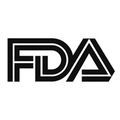FDA Grants 2 Breakthrough Therapy Designations to Asciminib in Ph+ CML
The FDA granted Breakthrough Therapy Designation to the novel STAMP inhibitor asciminib for 2 populations of patients with Philadelphia chromosome-positive chronic myeloid leukemia.

The FDA granted Breakthrough Therapy Designation (BTD) to the novel STAMP inhibitor asciminib (ABL001) for 2 populations of patients with Philadelphia chromosome-positive chronic myeloid leukemia (Ph+ CML), announced Novartis, in a press release.1
One BTD was granted to asciminib for the treatment of adult patients with Philadelphia chromosome-positive chronic myeloid leukemia (Ph-CML) who are in chronic phase (CP) and are previously treated with 2 or more tyrosine kinase inhibitors (TKIs). A second BTD was granted to the agent for the treatment of patients with Ph-CML who are in CP and harbor a T315I mutation.
Clinical trial data from the phase 3 ASCEMBL trial (NCT03106779) of asciminib versus bosutinib (Bosulif) as treatment of patients with Ph-CML in CP previously treated with two or more TKIs led the FDA to grant a BTD for the agent in the patient population. In addition, a phase 1 study (NCT04666259) that included subjects with Ph+ CML, some of whom harbored the T315I mutation, led the FDA to grant a BTD for patients with T315I mutations.
Data for the ASCEMBL trial presented during the American Society of Hematology (ASH) Annual Meeting. Asciminib showed statistically significant and clinically meaningful superiority in efficacy compared with bosutinib. Asciminib also had a tolerable safety profile.2
ASCEMBL is a multi-center, open-label, randomized study of 233 patients with CP Ph-CML. A total of 157 were randomized to receive asciminib 40 mg twice daily and 76 patients were randomized to receive bosutinib 500 mg once daily.
The primary end point of the study was major molecular response (MRR) at 24 weeks.
Treatment with asciminib led to an MMR of 25.5 compared with only 13.2 in the bosutinib arm, meeting the primary end point of the study (95% CI, 2.19-22.3: 2-sided P =.029).In addition, deep molecular responses were seen in a higher percentage of patients who received asciminib (10.8%) in comparison to those treated with bosutinib (8.9%).
The safety analysis showed that asciminib led to grade 3 adverse events (AEs) in 50.6% of patients compared with bosutinib. Which led to grade 2 AEs in 60.5. Much fewer patients in the asciminib arm discontinued treatment as a result of AEs (5.8%) compared with bosutinib (21.1%). Of the AEs observed in the study, the most frequently occurring in the asciminib arm versus the bosutinib arm were thrombocytopenia (17.3% vs. 6.6%), neutropenia (14.7% vs. 11.8%), diarrhea (0%, vs.10.5%), and increased alanine aminotransferase (0.6% vs.14.5%), respectively. Two deaths occurred in the study. One death was caused by ischemic stroke and arterial embolism in the asciminib arm and the other resulted from a case of septic shock in the bosutinib arm.
Results from ASCEMBL overall support the use of asciminib in CML, and especially for patients previously treated with 2 or more TKIs.
Data from the phase 1 study of 52 patients with T315I-mutated Ph+ CML were also presented during ASH 2020. Patients in the study received a 200 mg dose of the agent twice daily. Patients who were assessed in the study were all resistant to approved ATP-competitive TKIs like ponatinib (Iclusig). Like the ASCEMBL trial, the primary end point in the phase 1 study was MMR in patients who were ponatinib-naive and those who were previously treated with ponatinib.3
Overall, the MMR was 66.7% in the ponatinib-naïve population, which consisted of 21 patients. In the 28 who were pretreated with ponatinib, the MRR was 32.1%.
In terms of safety, grade 3 AEs were reported in 32.7% of patients. Serious AEs of any grade were seen in 23.1% and of those cases, 3.8% were considered to be related to treatment. No patients died as a result of treatment-related AEs. Four patients in the study did discontinue treatment due to AEs and 21 had dose reductions. AEs of special interest did occur in 10% of patients or more. The most frequently observed AEs of special interest included gastrointestinal toxicity (48.1%), hypersensitivity (26.9%), myelosuppression (25.0%), pancreatic toxicity (25.0%), hepatotoxicity (23.1%), thrombocytopenia (21.2%), hemorrhage (17.3%), leukopenia (15.4%), and edema/fluid retention (13.5%).
Investigators determined from these phase 1 data that asciminib is promising for patients with T315I-mutated Ph+ CML, included those who previously received ponatinib.
The 2 BTDs granted to asciminib in CML come after the agent was recently granted a Fast Track designation. Novartis plans to submit an application to the FDA for asciminib first half of 2021 for review under the FDA Oncology Center of Excellence Real-Time Oncology Review program.1
References:
1. Novartis receives FDA Breakthrough Therapy designations for investigational STAMP inhibitor asciminib (ABL001) in chronic myeloid leukemia. News release. Novartis. February 8, 2021. Accessed February 8, 2021. https://bit.ly/3cSZL6V
2. Hocchaus A, Boquipam C, Rea D, et al. Efficacy and safety results from ascembl, a multicenter, open-label, phase 3 study of asciminib, a first-in-class stamp inhibitor, vs bosutinib (bos) in patients (pts) with chronic myeloid leukemia in chronic phase (CML-CP) previously treated with ≥2 tyrosine kinase inhibitors (TKIs). Blood. 2020;136 (Suppl 2): LBA-4. doi: 10.1182/blood-2020-143816
3. Cortes JE, Hughes TP, Mauro MJ, et al. Asciminib, a first-in-class stamp inhibitor, provides durable molecular response in patients (pts) with chronic myeloid leukemia (CML) harboring the T315I mutation: primary efficacy and safety results from a phase 1 trial. Blood. 2020; 136 (Suppl 1): 47–50. doi: 10.1182/blood-2020-139677
TMLI Trial Shows Potential in Relapsed/Refractory Leukemia
October 2nd 2024In an interview, Jeffrey Wong, MD, and Anthony Stein, MD, provided an in-depth discussion on a phase 2 trial of total marrow and lymphoid irradiation with cyclophosphamide and etoposide in high-risk acute leukemia.
Read More